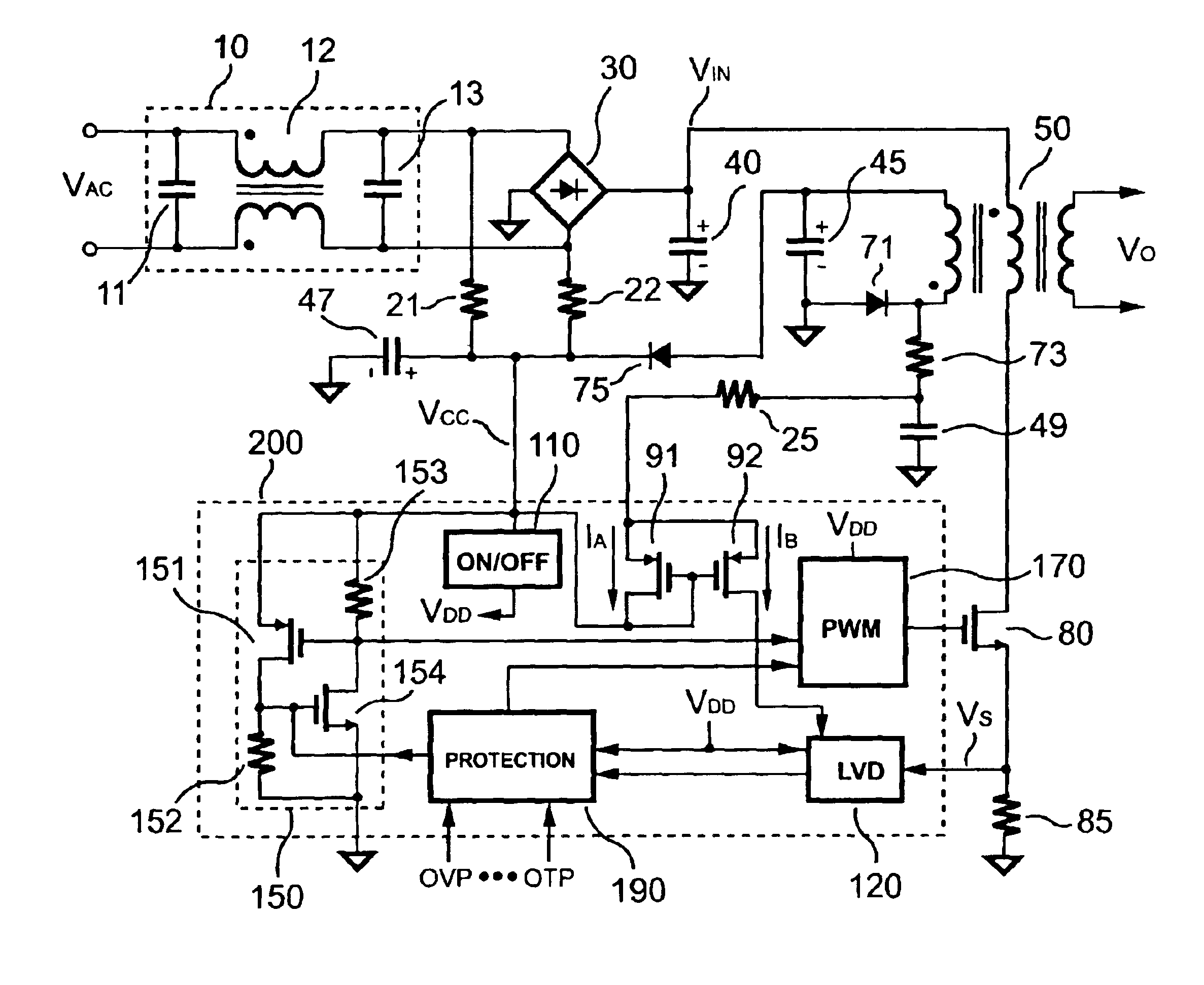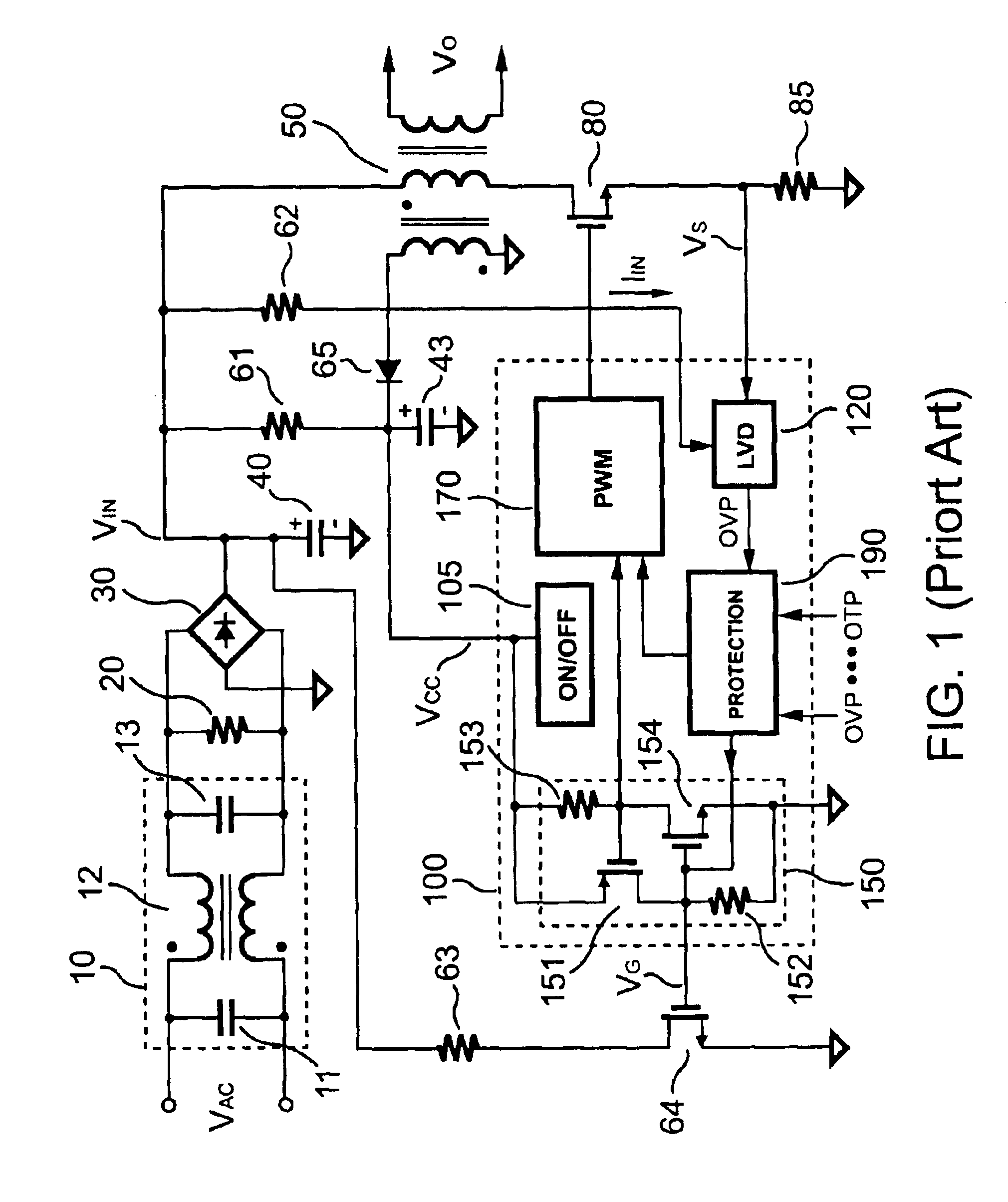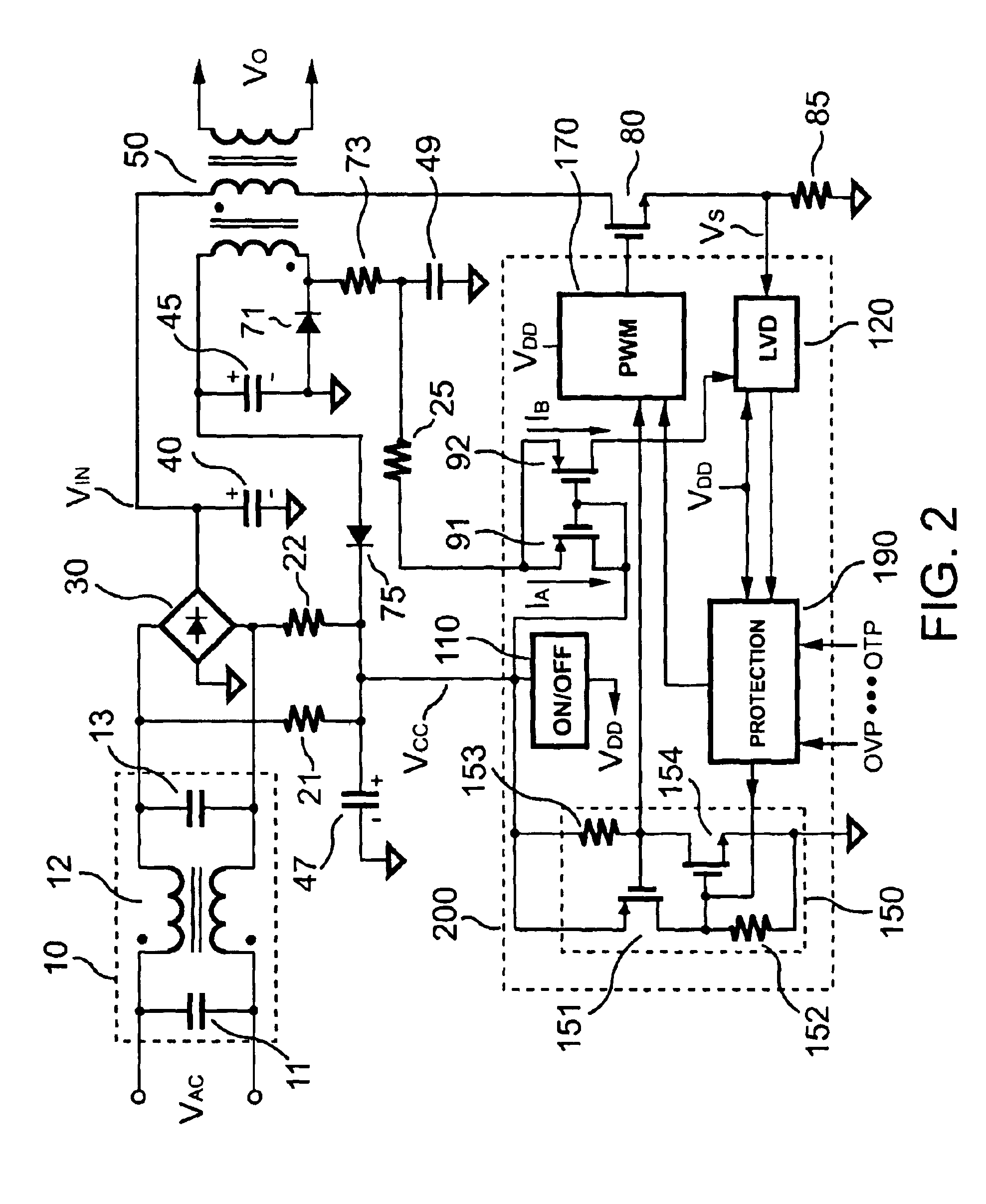Integrated start-up circuit with reduced power consumption
a start-up circuit and integrated technology, applied in the field of power supplies, can solve the problems of high power consumption, major power loss in the start-up circuit of known power supplies, and high power consumption, and achieve the effect of reducing the cost of the power supply and reducing the power consumption
- Summary
- Abstract
- Description
- Claims
- Application Information
AI Technical Summary
Benefits of technology
Problems solved by technology
Method used
Image
Examples
Embodiment Construction
[0023]FIG. 2 shows an input circuit of a power supply according to the present invention. An AC input source VAC is supplied to a first AC input and a second AC input of a bridge rectifier 30 via an EMI filter 10. An output of the bridge rectifier 30 is connected to an input capacitor 40 to produce a DC input voltage VIN. A transformer 50 is coupled to the input capacitor 40. A power transistor 80 is used for switching the transformer 50.
[0024]The power supply includes a control-circuit 200, which comprises an ON / OFF circuit 110, a line-voltage detector (LVD) 120, a latch circuit 150, a PWM circuit 170, a protection circuit 190, and two mirror transistors 91 and 92. A supply voltage VCC supplies power to the control-circuit 200. The ON / OFF circuit 110 starts up PWM operation whenever the supply voltage VCC exceeds a start-threshold voltage. When the supply voltage VCC drops below a stop-threshold voltage, the ON / OFF circuit 110 will disable PWM operation.
[0025]The PWM circuit 170 co...
PUM
 Login to View More
Login to View More Abstract
Description
Claims
Application Information
 Login to View More
Login to View More - R&D
- Intellectual Property
- Life Sciences
- Materials
- Tech Scout
- Unparalleled Data Quality
- Higher Quality Content
- 60% Fewer Hallucinations
Browse by: Latest US Patents, China's latest patents, Technical Efficacy Thesaurus, Application Domain, Technology Topic, Popular Technical Reports.
© 2025 PatSnap. All rights reserved.Legal|Privacy policy|Modern Slavery Act Transparency Statement|Sitemap|About US| Contact US: help@patsnap.com



